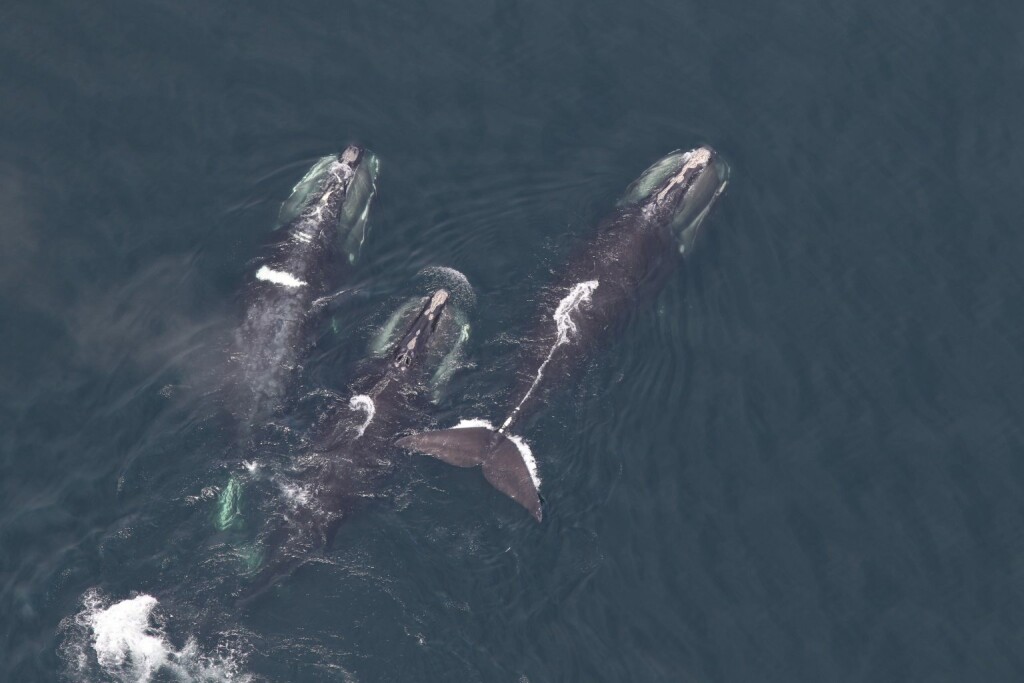Expanding protection for ocean ecosystems — now a keystone in the Biden administration’s climate change initiatives — could have big effects on maritime industries.
To meet the administration’s climate goals, the National Oceanic and Atmospheric Administration is “pursuing a holistic approach to curbing greenhouse gas emissions and building resilience to climate change and its impacts, including by conserving and restoring ocean and coastal ecosystems.”
In the works are plans for the expansion of national marine sanctuaries and protections for endangered species, such as the North Atlantic right whale. The administration has lent support to another broad goal of protecting 30% of U.S. waters by 2030 — the so-called “30-by-30” initiative.
All that could affect some of the busiest waters in the Northeast.
The latest sanctuary proposal would draw a protective boundary around the Hudson Canyon, the largest submarine canyon off the U.S. Atlantic coast. It extends southeast from its namesake Hudson River outlet at New York Harbor, cutting through the edge of the continental shelf to 350 miles offshore.
“Hudson Canyon’s grand scale and diverse structure – steep slopes, firm outcrops, diverse sediments, flux of nutrients, and areas of upwelling – make it an ecological hotspot for a vast array of marine wildlife,” according to a synopsis issued June 8 by NOAA.
Protecting that wildlife is likely to be a top priority in any plan that emerges.
The sanctuary proposal immediately provoked alarm among commercial and recreational fishing fleets that work off New York and New Jersey.
At the height of tuna season, the Hudson Canyon recreational fleet “looks like a city out there at night,” added Jim Budi of the American Sword and Tuna Harvesters, a longline fishermen’s group.
“There’s nothing clear to what they (NOAA) intend with commercial and recreational fishing,” said Robert Vanesse, executive director of Saving Seafood, a fisheries advocacy group.
The Hudson Canyon extends out toward the Gulf Stream. Far offshore there, the resulting eddies of warmer waters make a world-famous hotspot for catching swordfish and tuna. The “New York bigeye” tuna that command top prices in sushi restaurants come from the region.
Under the National Marine Sanctuaries Act, NOAA can open a public process “to designate and protect areas of the ocean and Great Lakes with special national significance.” Sanctuary designations have goals including conservation of marine wildlife, habitat and cultural resources, promoting sustainable uses, expanding ocean science and monitoring, and providing for long-term management.
The planning process for the canyon sanctuary is wide open for suggestions as to how NOAA should set sanctuary boundaries, goals and management priorities. Information about the process and public hearings is online at sanctuaries.noaa.gov/hudson-canyon/.
The Hudson proposal itself springs from a 2016 nomination to NOAA by the Wildlife Conservation Society, a nonprofit group with a long history of involvement with protecting whales. The endangered north Atlantic right whale — a species now estimated at only 336 animals — frequents the continental shelf where the Hudson Canyon descends.
NOAA has been under increasing pressure to reduce the whales’ decline by imposing restrictions on fishing gear and ship speeds off the East Coast. With the changing climate, whales will need even wider protections, a new study says.
Led by the New England Aquarium, researchers from seven institutions and agencies reviewed 20 years of data tracking right whale seasonal movements. They found the whale population has shifted its Northeast feeding and migration patterns significantly, as sea temperatures rise.
Their report, published in June in the journal Global Change Biology, suggests that government-mandated protections for right whales – already requiring restrictions on vessel speed limits and fishermen’s lobster and fish trap lines and buoys – will need to be adjusted as the whales shift their movements and habitats.
Warming climate trends in the Gulf of Maine may have led right whales to feed for longer periods of time in Cape Cod Bay before making the trek north to the Gulf of St. Lawrence when food is more plentiful there, the researchers wrote.
“Vessel speed limits and fishing restrictions in Cape Cod Bay were designed to coincide with the historical peak in North Atlantic right whale habitat use,” according to the New England Aquarium. “The research illustrates the continued need for government agencies to alter protective measures for threatened and endangered whales, as those animals adapt to their feeding and migration patterns in response to climate change.”




